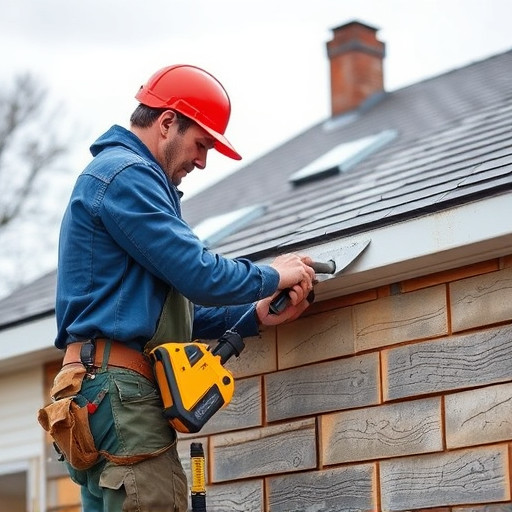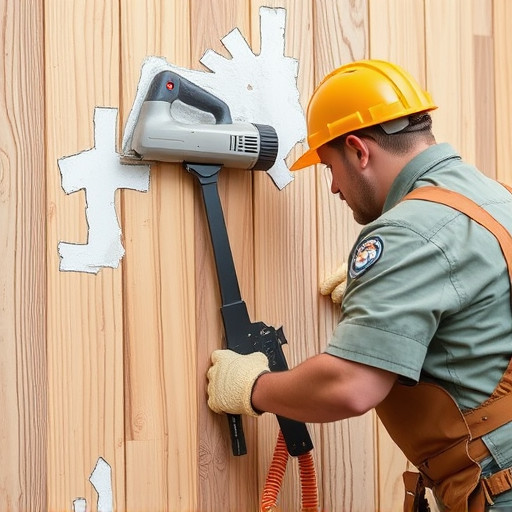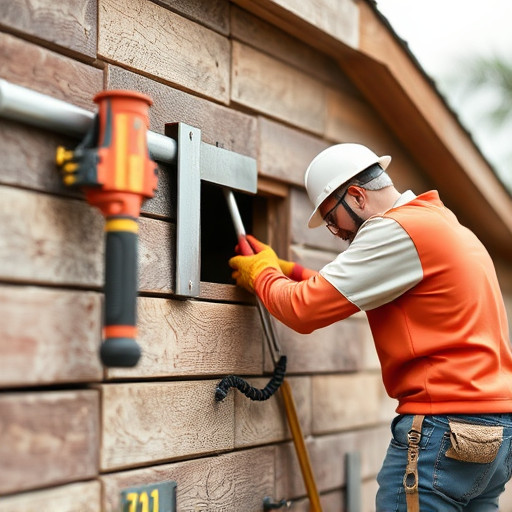This text offers Handyman Tips for navigating common electrical problems, emphasizing proactive measures for quick fixes. It guides readers through initial checks like inspecting bulbs and secure fixtures, as well as more advanced troubleshooting techniques such as junction box inspections and multimeter testing. Safety is paramount, with emphasis on turning off power at the main breaker, using protective gear, and keeping a fire extinguisher nearby. The Handyman Tips also cover specific issues like flickering lights, circuit breakers tripping, power outages, outlet and switch problems, and light fixture diagnostics, providing solutions for both basic and complex electrical concerns while advocating consultation with professionals for safety in challenging cases.
Struggling with recurring electrical glitches? This comprehensive guide is your go-to resource for mastering basic electrical troubleshooting. From power outages and faulty outlets to complex lighting issues, we equip you with practical ‘handyman tips’ to navigate common problems safely and effectively. Armed with the right knowledge, you’ll gain confidence in tackling these challenges head-on. No more calling electricians for minor fixes!
- Understanding Common Electrical Problems
- Tools and Safety Precautions for Troubleshooting
- Diagnosing Power Outages
- Handling Faulty Outlets and Switches
- Troubleshooting Light Fixtures and Ceiling Fans
- Advanced Tips for Complex Issues
Understanding Common Electrical Problems

Understanding common electrical problems is a crucial part of being a handyman. Issues like flickering lights, circuit breakers tripping, or power outages can arise from various factors—from loose connections to faulty wiring. By familiarizing yourself with these basic issues, you’ll be better equipped to diagnose and fix them quickly, saving time and potentially preventing more serious problems down the line.
Handyman tips recommend starting with simple checks like inspecting bulbs for burnouts or ensuring fixtures are tightly screwed. For recurring issues, consider looking for loose connections at junction boxes or checking for signs of damage or wear in cables and wires. If you’re unsure about any electrical work, it’s always wise to consult a professional electrician to avoid hazards associated with electricity.
Tools and Safety Precautions for Troubleshooting

When tackling electrical issues, having the right tools is essential for safety and efficiency. While some basic problems can be resolved with a voltmeter or multimeter, more complex tasks may require specialized equipment like wire strippers, pliers, and screwdrivers. Always opt for high-quality tools to ensure precision and longevity.
Safety should never be compromised during electrical troubleshooting. Before beginning any work, turn off the power at the main circuit breaker or fuse box. Wear protective gear, including insulated gloves and safety glasses, especially when dealing with exposed wires. Keep a fire extinguisher nearby as a precaution against potential hazards. Remember, a little preparation goes a long way in ensuring a smooth and secure troubleshooting process for any handyman.
Diagnosing Power Outages

When faced with a power outage, the first step in diagnosing the issue is to check your main circuit breaker or fuse box. Many times, a tripped circuit breaker or blown fuse is the culprit, easily rectified by resetting the breaker or replacing the fuse. If these checks reveal no issues, the problem could be more complex, such as a faulty wiring connection, overloaded circuits, or even damage to your electrical panel.
Handyman tips recommend examining your home’s electrical system for any signs of wear and tear, loose connections, or outdated wiring. These issues can cause intermittent power loss or complete outages. Checking for flickering lights, dead outlets, or the smell of burning in recently used appliances can also point to underlying electrical problems that require professional attention.
Handling Faulty Outlets and Switches

When it comes to electrical troubleshooting, knowing how to handle faulty outlets and switches is a valuable skill for any handyman. Start by checking the power source; ensure the circuit breaker isn’t tripped or the fuse blown. If everything seems fine, try plugging in another device into the same outlet to see if it works. If not, the outlet may be faulty and requires replacement.
For switches, flicking them on and off can sometimes resolve minor issues. However, if the switch is hot to the touch or makes a sizzling sound, it’s likely damaged and needs to be replaced. Always remember to turn off the power at the main circuit breaker before attempting any repairs for safety.
Troubleshooting Light Fixtures and Ceiling Fans

Troubleshooting light fixtures and ceiling fans is a valuable skill for any handyman. Start by checking the power source; ensure the circuit breaker isn’t tripped or the fuse isn’t blown. Sometimes, a simple reset can resolve the issue. Next, inspect the fixture or fan for loose connections at the base or within the housing. Tighten any wobbly parts, as even a minor vibration can disrupt electrical integrity.
If the problem persists, consider replacing the light bulb (or bulbs) with new ones of the correct wattage and type. Ceiling fans may require cleaning or lubricating the motor to restore proper function. For more complex issues like flickering lights or erratic fan speeds, consult a professional electrician for safety and accurate diagnosis.
Advanced Tips for Complex Issues

When tackling complex electrical issues, a few handyman tips can make all the difference. One crucial method is to isolate the problem by disconnecting circuits one by one until the faulty component is identified. This process, known as circuit isolation, allows for safer troubleshooting and ensures you don’t inadvertently cause further damage. Additionally, using a multimeter to test voltage, current, and resistance can provide invaluable insights into the problem’s nature.
Remember, complex electrical issues often require a systematic approach. Keeping detailed records of your observations and tests can be immensely helpful in diagnosing problems accurately. With these advanced tips, handyman enthusiasts can tackle challenging electrical troubleshooting tasks with increased confidence and efficiency.
Electrical troubleshooting doesn’t have to be daunting. By understanding common issues, arming yourself with essential tools, and following safety precautions, you can effectively diagnose and resolve many problems on your own. From power outages and faulty outlets to light fixtures and ceiling fans, these handyman tips will empower you to navigate basic electrical repairs with confidence. Remember, for complex or high-voltage issues, always prioritize safety by seeking professional assistance.
